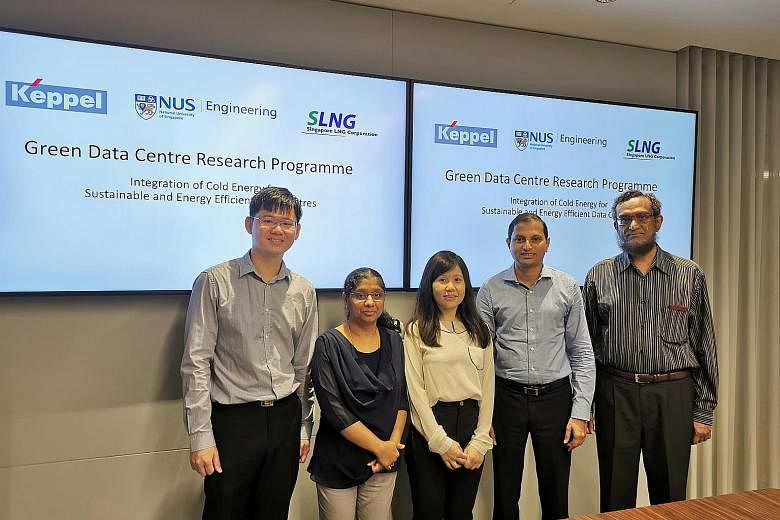Cooling and running the equipment in data centres requires plenty of energy, but three Singapore entities have joined forces to develop novel cooling technology that is more efficient and can save costs.
The new cooling technology - called Semiclathrate Thermal Energy Carrier System - may boost the power usage effectiveness of data centres by 20 per cent.
It should also save space and construction costs through reducing the footprint of the cooling infrastructure, said the National University of Singapore's (NUS) Faculty of Engineering, Keppel Data Centres Holdings and Singapore LNG (SLNG), which teamed up to develop the technology.
This innovation could pave the way for more sustainable and compact data centres, the partners added in a statement yesterday.
The research project is supported by the Singapore Government's National Research Foundation, under its Green Data Centre Research Programme. It comes amid a rapid expansion for cloud-based services, which has in turn pushed up the demand for data centres.
Due to the high internal load and the need for consistent cooling and operations, data centres are among the major power consumers in the building sector.
Last year, data centres accounted for 7 per cent of total annual electricity consumption in Singapore.
A team from NUS Engineering, Keppel Data Centres and SLNG will be working on a prototype of a new cooling medium that can efficiently store and carry cold energy from the Singapore LNG Terminal to the data centres. This will then be circulated within the cooling loop in each data centre to perform effective cooling. The prototype will be designed, built and operated for demonstration by 2022 at NUS.
In addition, Keppel Data Centres and SLNG are exploring ways to harness and use the cold energy from the Singapore LNG Terminal to offset the energy demands at data centres.SLNG chief executive Tan Soo Koong said that SLNG is exploring other ways to harness the LNG cold energy from its terminal and be part of the circular economy on Jurong Island.
Associate Professor Praveen Linga of NUS, said: "NUS Engineering researchers will leverage our expertise in hydrate technologies and process engineering to identify a suitable semiclathrate promoter as well as develop a reactor and process design for this novel cooling technology." Prof Linga is from NUS' Department of Chemical and Biomolecular Engineering and leader of the project team.
Keppel Data Centres chief executive Wong Wai Meng said: "We are pleased to collaborate with NUS and SLNG on (making) cooling - which is a key aspect of data centre operations - more efficient, and thus contribute to a more sustainable future."
Keppel Data Centres is a 70-30 joint venture between Keppel Corp subsidiaries Keppel Telecommunications & Transportation and Keppel Land.

